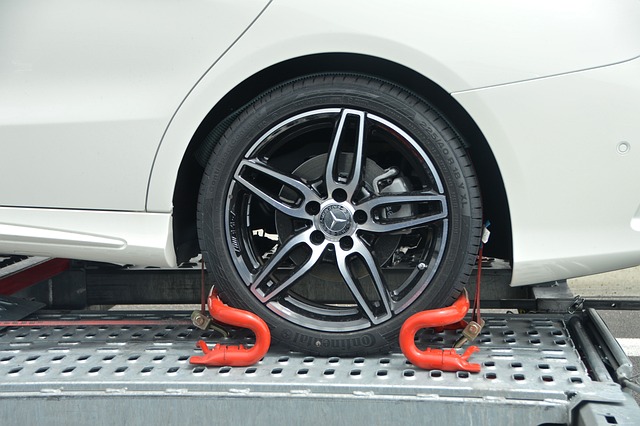State-mandated car inspections, emissions testing, and Real ID compliance are vital for vehicle safety and environmental standards. Drivers should stay informed about their state's regulations to avoid fines or impoundment. Recent reforms have streamlined DMV services with online scheduling and digital documentation. The Real ID Act of 2005 established standardized IDs with specific security features, and deadlines are approaching mid-2023. Proactive compliance, regular vehicle maintenance, and keeping detailed records are crucial for avoiding issues and ensuring safe driving.
Keeping your vehicle in top shape is not just about safety; it’s also crucial for legal compliance with ever-evolving DMV regulations. With state car inspections, emissions testing, and Real ID compliance deadlines looming, staying informed can make the process stress-free. This article guides you through recent changes in DMV services, ensuring you’re prepared. We’ll break down state inspections and emissions testing, shed light on simplifying compliance, and prepare you for Real ID requirements. Plus, we offer year-round tips to keep your car roadworthy and help you avoid common maintenance pitfalls.
- Understanding State Car Inspections and Emissions Testing
- Recent DMV Service Changes for Easier Compliance
- Real ID Compliance: Upcoming Deadlines and Requirements
- Checking Your State-Issued License Plate or Driver’s License
- Navigating the Process of Renewing Your Driver’s License
- Tips for Keeping Your Car Roadworthy Year-Round
- Common Pitfalls to Avoid During Vehicle Maintenance
Understanding State Car Inspections and Emissions Testing

State car inspections and emissions testing are essential components of vehicle maintenance, designed to ensure road safety and environmental protection. These processes involve thorough examinations of a car’s critical systems, including brakes, lights, tires, and exhaust pipes. During emissions testing, specialized equipment checks the vehicle’s output of pollutants, confirming it meets established environmental standards. Understanding these requirements is crucial for every driver, as failure to comply can result in fines or even vehicle impoundment.
Many U.S. states mandate regular inspections and emissions tests for all vehicles, with specific deadlines and procedures varying by region. It’s vital to stay informed about your state’s regulations, especially when it comes to Real ID compliance, which often coincides with these testing requirements. By being proactive in addressing these needs, drivers can avoid potential issues and keep their vehicles safely on the road.
Recent DMV Service Changes for Easier Compliance

Recent changes to DMV services have made keeping your car roadworthy less intimidating. State inspections and emissions testing procedures have been streamlined, offering greater convenience for drivers. Many states now provide online scheduling and digital documentation, eliminating the need for lengthy visits and paperwork. Additionally, renewing a driver’s license has become more accessible with extended validity periods and simplified renewal processes.
These updates aim to modernize the DMV experience, ensuring drivers can maintain their vehicle’s compliance without facing significant barriers. With Real ID compliance deadlines approaching, it’s crucial to verify your state-issued ID and license plate adherence to new standards. By staying informed about these changes, drivers can navigate the process effortlessly and keep their vehicles on the road legally.
Real ID Compliance: Upcoming Deadlines and Requirements

Real ID compliance is a growing priority for U.S. drivers, with many states facing imminent deadlines. Introduced as part of the Real ID Act of 2005, this program aims to establish standardized, secure identification across the nation. The primary requirements include specific documentation and security features on state-issued IDs. These features ensure that your driver’s license or state ID card is legitimate and meet enhanced security standards set by the U.S. government.
Deadlines vary from state to state, with many requiring compliance by mid-2023. To check if your license meets Real ID standards, verify with your local DMV or visit their official website. The process typically involves updating your information and ensuring your identification document aligns with current requirements. It’s crucial to stay informed and take proactive steps to avoid any inconvenience during these transitions.
Checking Your State-Issued License Plate or Driver’s License

Checking your state-issued license plate or driver’s license is a crucial first step in ensuring compliance with Real ID requirements. Different states have different deadlines, so it’s essential to verify the specific guidelines for your location. Many states are phasing in Real ID-compliant licenses, which typically involve additional security features like advanced security ink, microprinting, and sophisticated electronic chips. These features make tampering significantly more difficult, enhancing overall safety.
When inspecting your license, look for any signs of damage or wear that could compromise its integrity. Ensure the photo matches your current appearance and that all information is clearly legible. If you notice any discrepancies or suspect an issue, contact your local DMV immediately to clarify and obtain any necessary updates. Staying informed and proactive about these changes ensures a smoother transition and helps maintain your driving privileges.
Navigating the Process of Renewing Your Driver’s License

Renewing your driver’s license is a straightforward process, even with the introduction of Real ID requirements. Most states offer multiple ways to renew, including online, by mail, or in-person at a DMV office. Online renewal typically involves creating an account on your state’s official DMV website, filling out necessary forms, and submitting required documents such as proof of identity and residency. This method is often the quickest and most convenient.
If you prefer not to renew online, you can mail in your application along with the required documents and fees. Alternatively, visiting a local DMV office allows for immediate processing and often provides an opportunity to update other information on your record, like your address or vehicle registration. Regardless of the method chosen, staying organized and gathering all necessary materials beforehand will ensure a smooth and efficient renewal experience.
Tips for Keeping Your Car Roadworthy Year-Round

Keeping your car in top condition is not just about annual services; it’s a year-round commitment. Here are some simple tips to ensure your vehicle stays roadworthy: Start with regular maintenance, including checking tire pressure and tread depth, ensuring all fluids (brake fluid, engine oil, coolant) are at the right levels, and inspecting belts and hoses for cracks or wear. Keep an eye on lights—both internal and external—and replace any burnt-out bulbs promptly. Regularly clean and lubricate your vehicle’s hinges and door latches to maintain smooth operation. Lastly, be mindful of seasonal changes; switch to winter tires when necessary, and ensure your battery is charged and ready for colder weather.
Common Pitfalls to Avoid During Vehicle Maintenance

Many vehicle owners often fall into several common traps when it comes to maintaining their cars, leading to costly repairs and safety risks on the road. One of the biggest pitfalls is neglecting regular maintenance checks. Skipping oil changes, ignoring tire pressure, or delaying brake inspections can cause severe damage and affect fuel efficiency. Always refer to your car’s owner manual for recommended service intervals and stay on top of these tasks.
Another pitfall is not keeping accurate records of repairs and services performed. Keeping a logbook or using a digital tracking app ensures you have all the details readily available, including maintenance schedules, repair histories, and any specific issues noted by mechanics. This information is valuable for diagnosing problems and ensuring your vehicle remains in top condition.
Keeping your car well-maintained and compliant with local regulations is no longer a daunting task, thanks to streamlined DMV services. Recent changes have made it easier to navigate inspections, emissions testing, and license renewals, such as Real ID compliance, ensuring a smoother experience for drivers across the U.S. By understanding these requirements and following tips for year-round vehicle care, you can confidently keep your car roadworthy and avoid common pitfalls.



